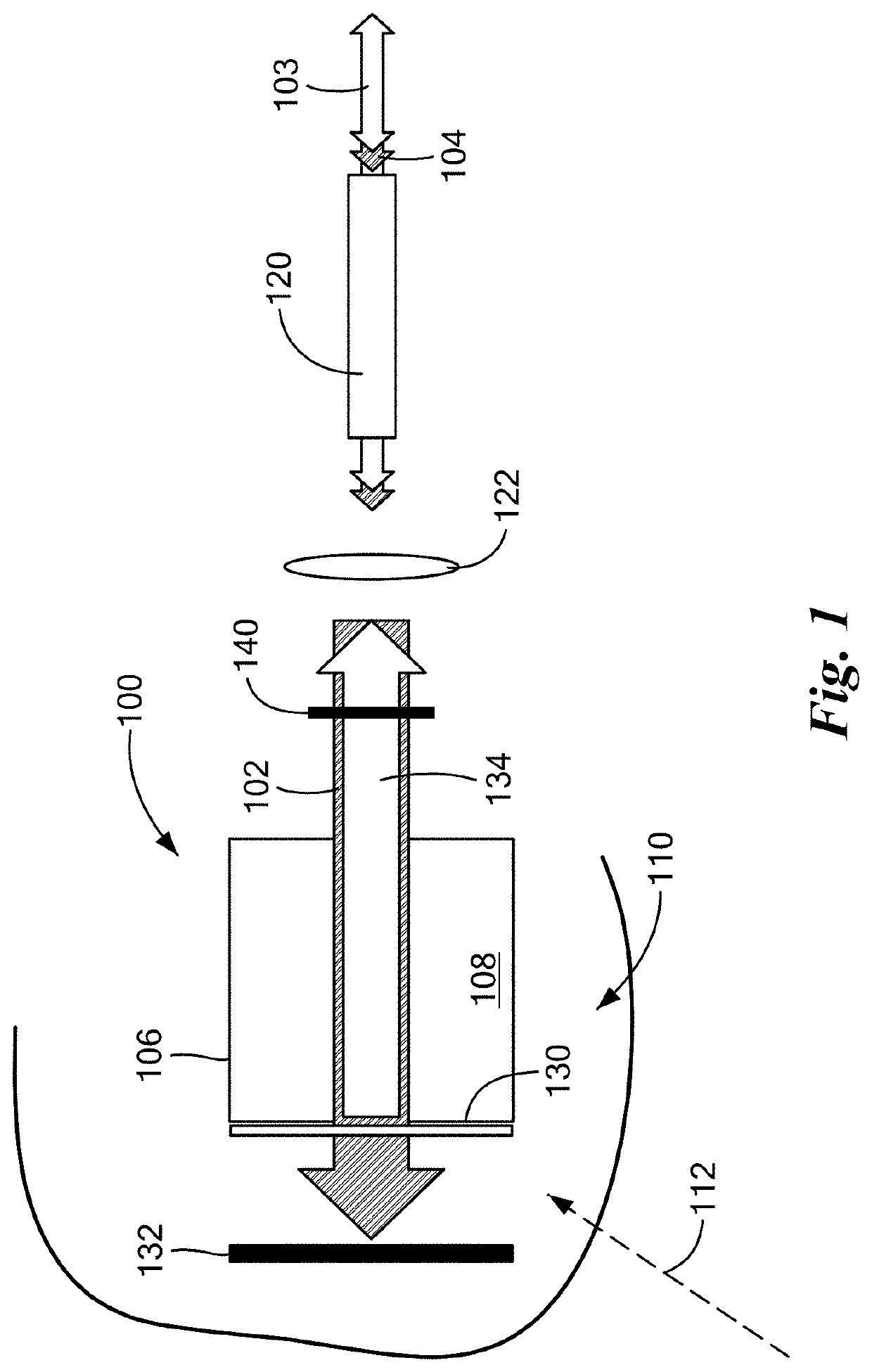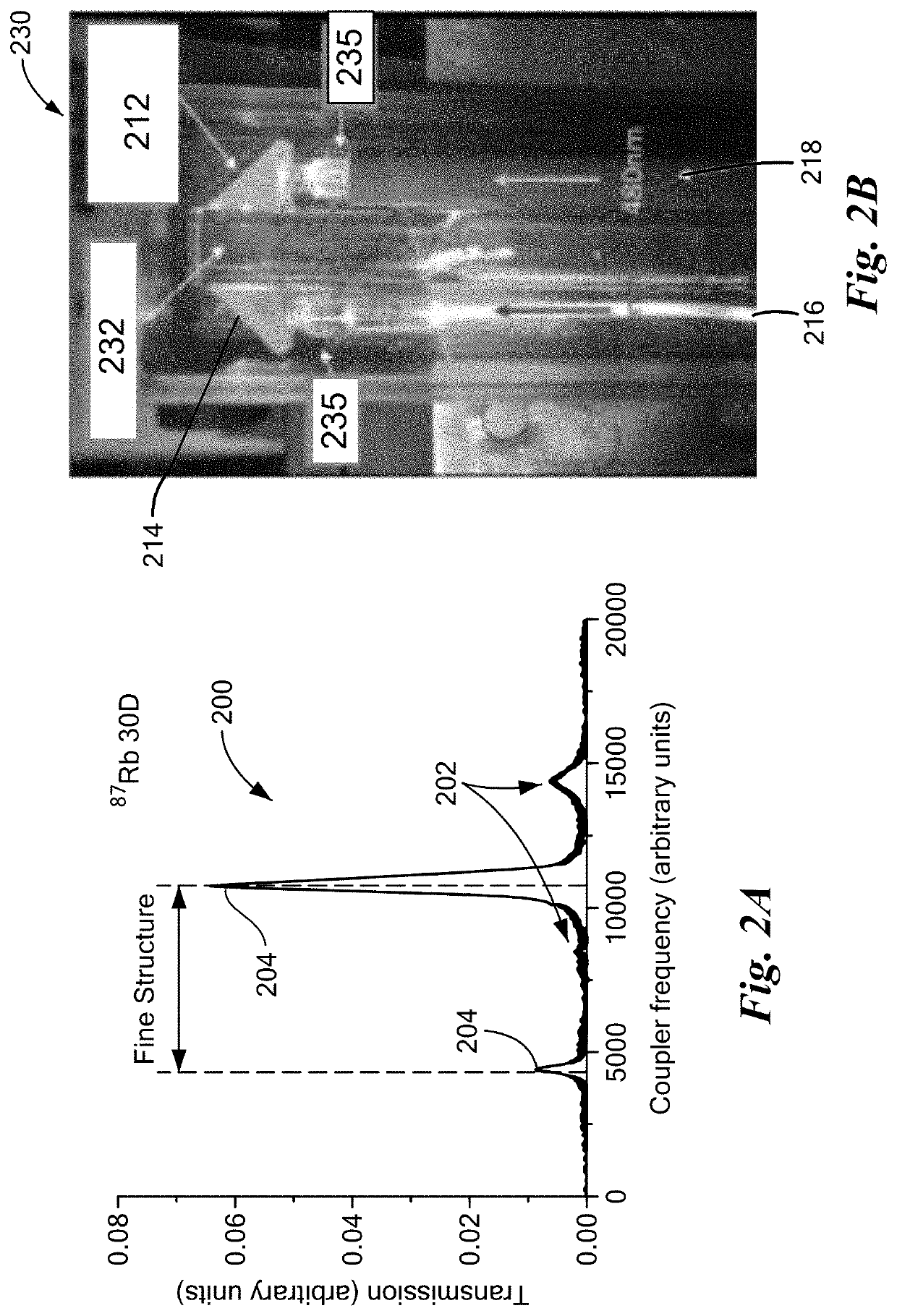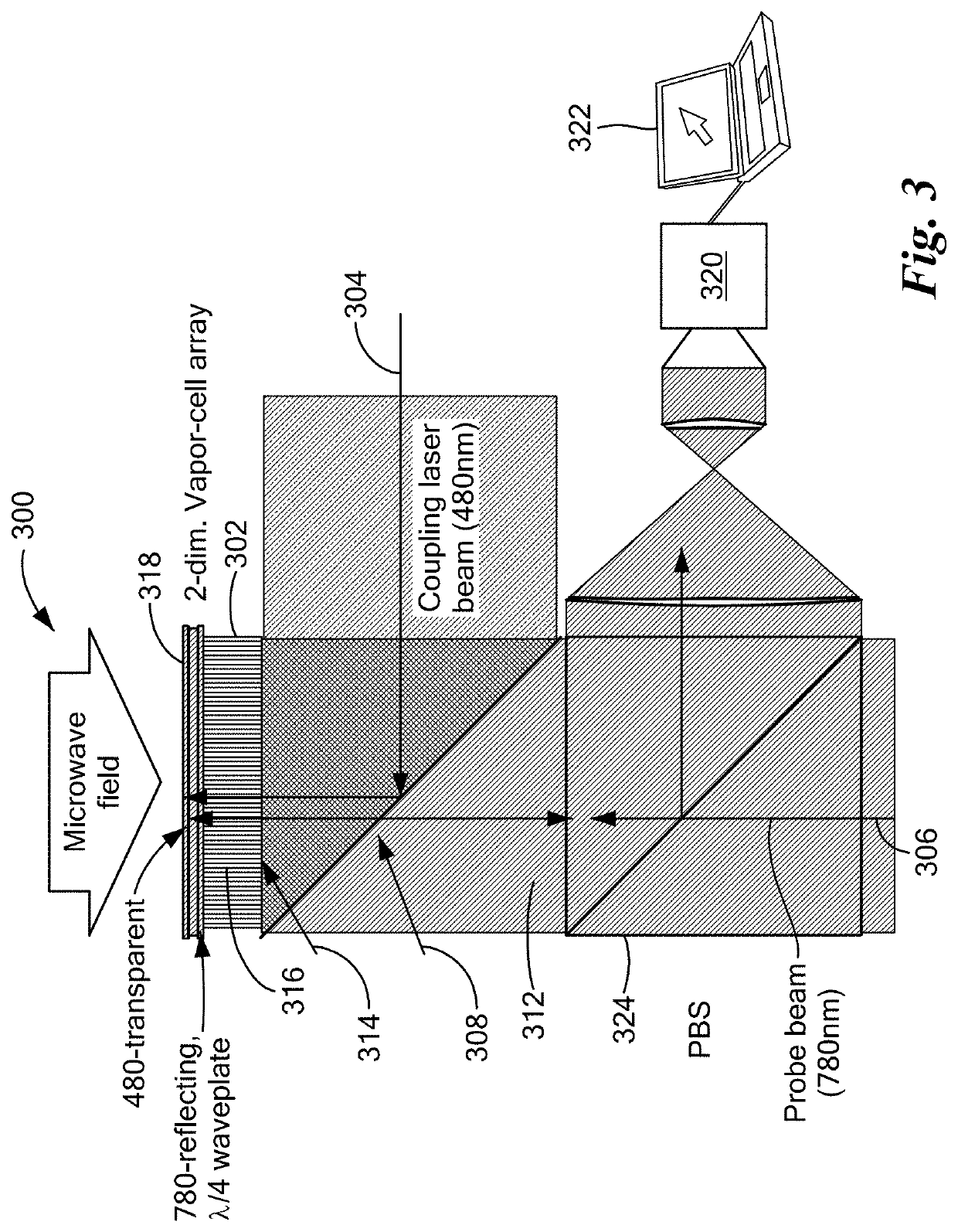No method of Rydberg
spectroscopy hitherto suggested, however, has ever been suited to measuring a phase of an electromagnetic field (relative to a fiducial phase reference).
(1) Low sensitivity; the highest field sensitivity demonstrated to date is at the 1 mV / m level, limited primarily by EIT linewidths. Furthermore, this sensitivity level has only been achieved by monitoring small changes in the EIT peak line shape. Unlike measuring Rydberg energy-level
spitting directly, where the field is traceable to fundamental constants and invariable atomic parameters, extracting the RF
electric field from a detailed EIT line shape analysis requires a relatively complex model that depends on experimental parameters such as
laser beam powers and vapor pressures, thereby precluding an absolute field measurement and making it unreliable in everyday operation. To date, the most sensitive measurement sensitivity in the prior art, a shot-
noise limited sensitivity of about 3 μV / cm / Hz1 / 2, has been demonstrated in work of Kumar et al., “Rydberg-atom based radio-frequency electrometry using
frequency modulation spectroscopy in
room temperature vapor cells,” Opt. 25, 284263 (21 Jan. 2017), an improvement of half an order of
order of magnitude over sensitivity reported earlier in Fan et al., “Effect of
Vapor Cell Geometry on Rydberg-Atom-Based Measurements of Radio-Frequency Electric Fields,” Phys. Rev. Appl., 044015 (2015), both of which papers are incorporated herein by reference. The latter work exploits minute RF-induced EIT enhancement of Rydberg-EIT lines by weak, resonant RF fields, a method expected to be somewhat unreliable in everyday field-measurement operation, because the minute changes depend on many details, such as
laser powers and
cell pressure. More robust means to enhance the sensitivity are desired.
(2) Inability to measure RF fields over a continuous frequency range. In weak RF fields, the method is limited to measurements of RF fields that are resonant with
dipole-allowed transitions between Rydberg states. Weak RF fields that are off- and far-off-
resonance from any transition cannot be measured easily, if at all.
(3) RF polarization measurements currently require a complex analysis of the atomic spectra.
(4) All prior art Rydberg-EIT measurements have necessarily been field amplitude measurement, while information on the phase of the
RF field has never been possible to obtain in part because of physical constraints discussed herein.
(5) The form factor of measurement apparatuses used to date for Rydberg EIT measurements have necessarily require large components, assemblies that are not portable or have a large
dielectric footprint, thereby precluding the ability to perform measurements in many practical applications or to be integrated into existing RF measurement and transmission systems.
(6) Prior to the invention described herein below, Rydberg EIT techniques have served solely for measurement of coherent fields. Prior methods were incapable of measuring either incoherent fields or
noise.
This aspect has, to-date, posed a challenge in the implementation of Rydberg EIT in vapor cells in practical sensor designs for applications because it requires the
laser beams to enter and exit the cells from opposing sides, either via free-space propagation or optical fibers on either side of the
cell.
This can lead to a sensor head with a large
dielectric footprint and size that is undesirable for measurement applications.
Further, for extensions to multi-pixel sensor arrays, entry of the optical beams from opposite sides of the cells can limit pixel packing density and resolution achievable in an array.
While most of the matter in the
observable universe exists in the
plasma state, measurement or
inference of characteristics of an
electric field within a region of
plasma poses particular challenge to science unless collective motion of the
plasma may be observed, or unless a physical probe can be inserted into the plasma.
While existing methods afford passive non-intrusive measurements, they may also require a priori knowledge of the optical absorption or emission spectra of the plasma constituents.
This can make it difficult to distinguish collective plasma phenomena of interest from few-body processes involving constituent plasma particles in the diagnostic readout.
Along these lines, some plasmas are expected to have emission profiles at frequencies and emission strengths that are difficult to detect using conventional detectors and spectrometers.
Weak IR emissions from vibrational transitions in plasma constituents, for example, may in some instances provide useful information but detectors required for measuring these low IR intensity levels have not been readily available.
This can
pose a significant drawback in fundamental plasma studies, where the nature of the plasma is itself the subject of study.
 Login to View More
Login to View More 


